- Chef's knifeThe is the universal tool you pick up most often in the kitchen.
- If you choose a quality piece and low maintenance, it will last for many years.
- You will notice the difference immediately, as slicing and cutting with a chef's knife is significantly easier.
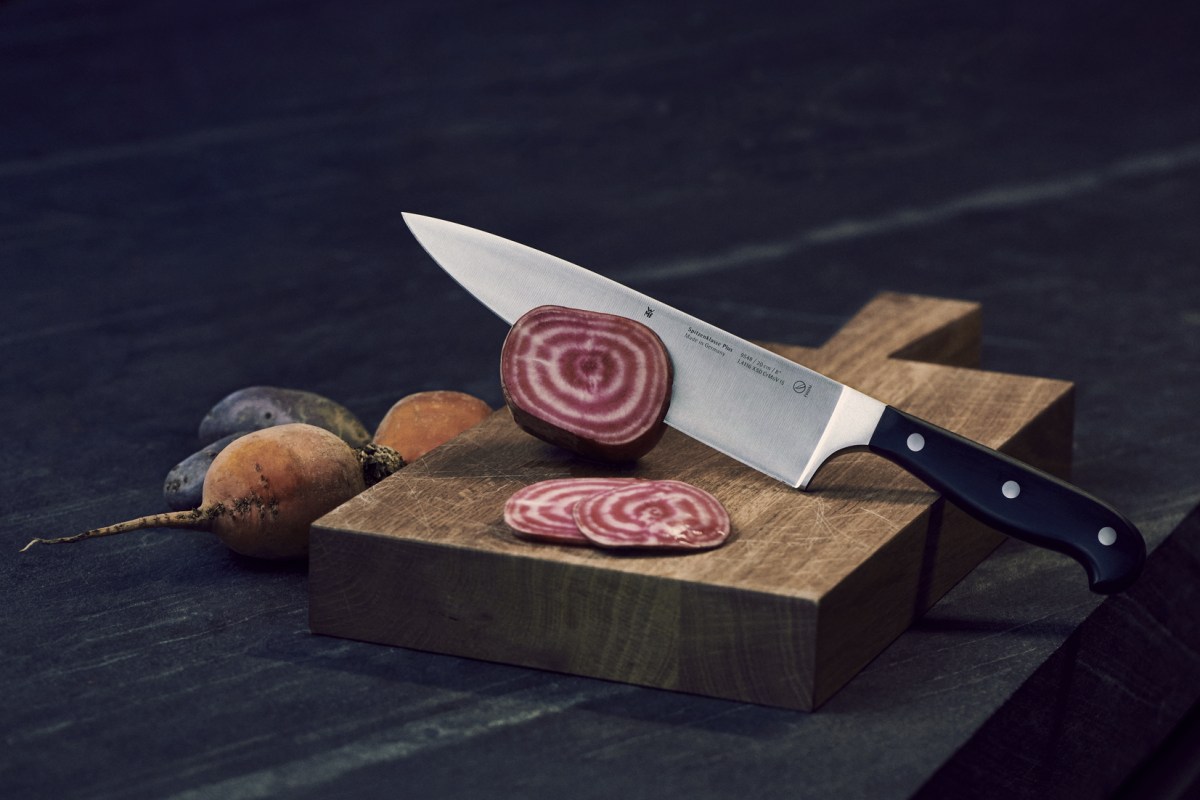
Classic chef or Japanese?
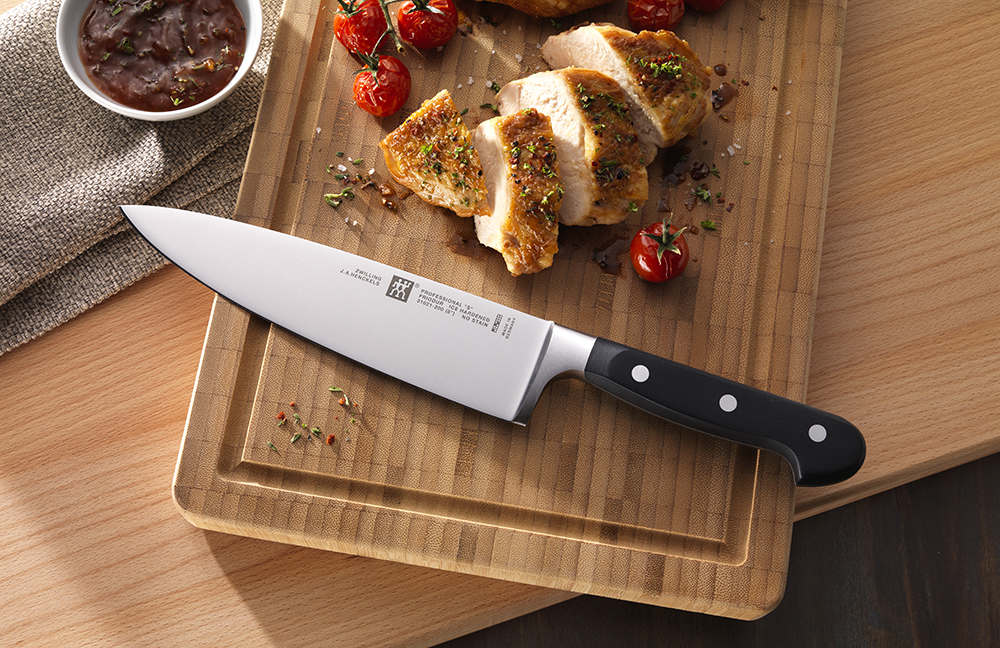
The classic chef's knife, sometimes also known as a chef's knife or simply western chef's knife, is a versatile tool with a wider curved blade. Usually made of stainless steel or carbon steel, it is heavier and more robust overall. It can therefore easily handle cutting hard foods such as meat on the bone, pumpkin or melon.
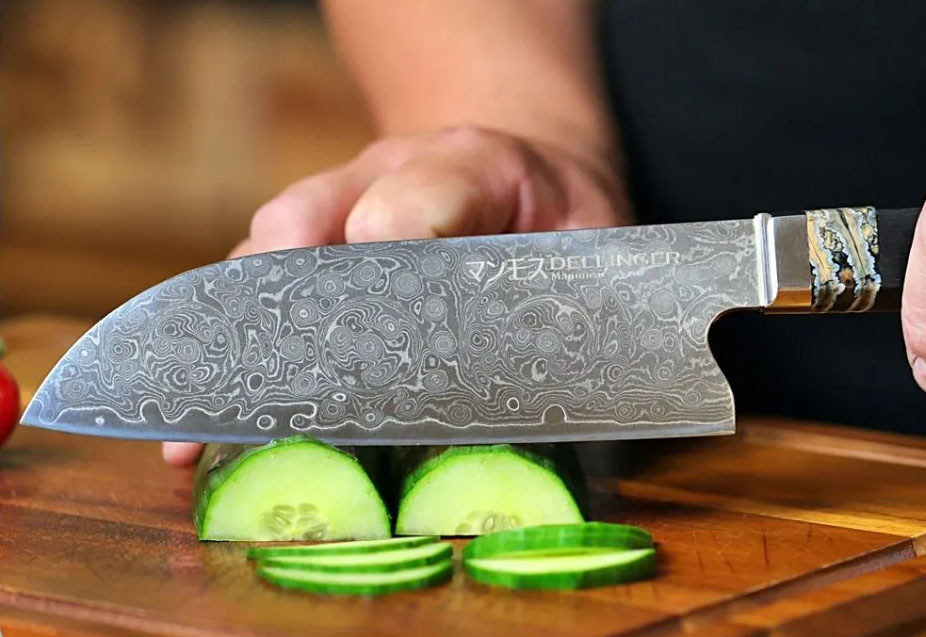
Japanese knives, such as santoku or gyuto, are lighter and their blade is usually thinner with little or no curvature. They are usually made of harder steel, which allows for extreme sharpness while still being fragile. They are therefore much better suited for cutting delicate fish or chopping herbs.
The best chef knives according to customer reviews


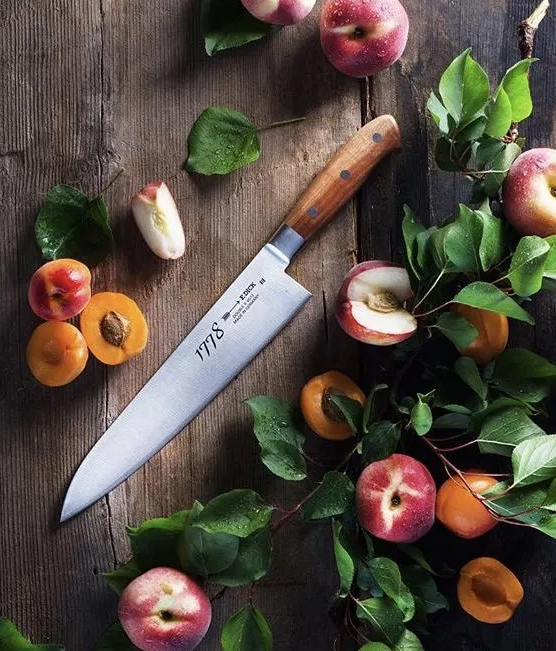
- The ideal hardness of quality chef's knives should be in the range of 52-56 HRC. This level provides the ideal balance between sharpness and wear resistance, ensuring a long knife life and reliable performance in everyday use.
- Japanese knives of damascus steel have an HRC of over 60.
- Modern cutlery steel reaches a hardness of 64-68 HRC.
- At the same time, the harder the knife, the more fragile it is. Very hard knives are therefore great for delicate work (for example, filleting fish), but are easily damaged when cutting bones.
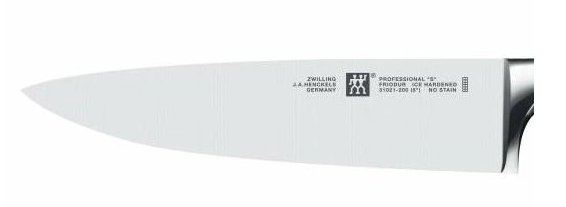
Chef's knife blade
- Damascus steel is formed by combining two types of steel, one with a very high carbon content and the other with a very low carbon content. This makes the blade made of this metal not only very strong, sharp and durable, but also has an exceptional design.
- Carbon steel is very sharp and easy to sharpen. However, like any great material, a carbon steel blade needs a little care, washing and drying thoroughly after each use, as it is not resistant to corrosion.
- Stainless steel is an affordable option that is easy to maintain and resists corrosion well, but you must be prepared for more frequent sanding.
- Ceramics is affordable, lightweight and above all very sharp. At the same time, however, it is worth mentioning that it is not easy to sharpen and it is fragile. It is therefore a material that is more suited to smaller kitchen knives that are not used for cutting meat or hard vegetables.
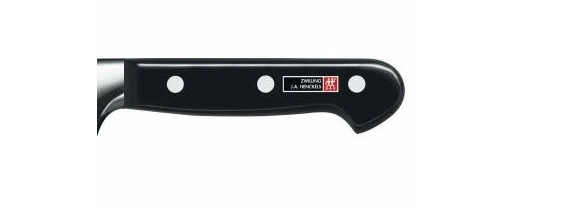
Handle of a chef's knife
- Wood is pleasant to the touch, does not slip and gives the knife a classic look. On the other hand, it is more demanding to maintain, as it should be regularly treated with oil to prevent it from drying out and cracking. At the same time, the wood also absorbs moisture and grease, which can interfere with its elegant design.
- Metal is very durable, easy to maintain, looks modern and professional. On the other hand, it tends to be heavier, cold to the touch and can also be slippery.
- Plastic is highly resistant to moisture, grease and other substances that are often found in the kitchen. It is also easy to clean and requires no special care. However, plastic handles are often not as aesthetically pleasing.
- Composite is a mixture of several materials, often including an anti-slip layer. Composite layers are durable and easy to maintain.
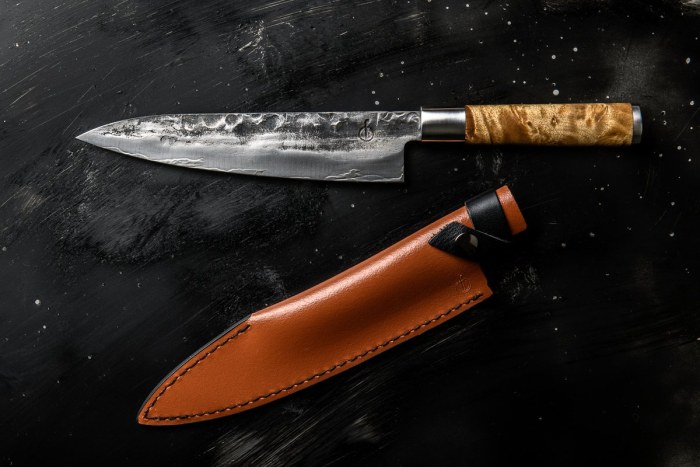
Short (15-18 cm): ideal for beginners or more subtle cooks, they usually fit better in the hands of women. They are also suitable for smaller slicing volumes and more precise cuts.
Medium (20-23 cm): universal size suitable for most cooking activities. If you plan to have only one chef's knife in your kitchen, reach for this length.
Long (25+ cm): perfect for anyone who often prepares large portions of meat or vegetables, is confident in the kitchen and finds large knives a real asset.
Forged or pressed knife?
Favourite chef's knives

How to care for chef's knives
After use, rinse the knife with warm water and a mild detergent and dry immediately. Store it in block, protective case or magnetic bar. Avoid leaving knives in the drawer compartment, as they wear out much more quickly. Sharpen the knife regularly usingTargets or an abrasive stone, or have it professionally sharpened. Read more about caring for chef's knives...
The best brands of chef's knives
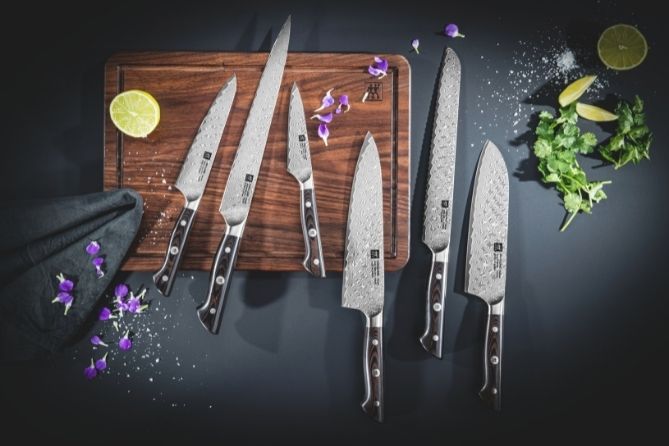
The mecca of high-end cutlery is the German town of Solingen, which is also an internationally protected designation of origin with a registered trademark. This can only be used to designate cutlery products that have been processed and finished in all the basic production processes within the Solingen industrial area.
Leading manufacturers, who have been carrying on this cutlery tradition for several centuries, include Zwilling, Wüsthof or Güde Solingen. Other highly appreciated chef's knives include: Victorinox, Forged, Dellinger or Lion Sabatier.
